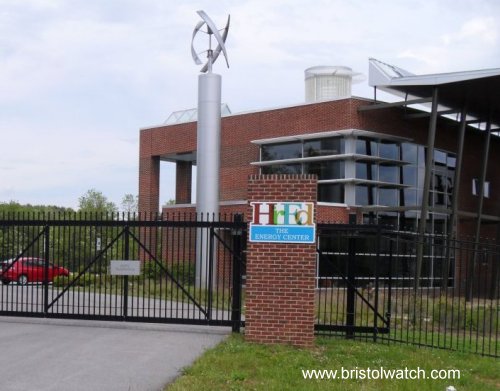

The Southwest Virginia Energy Center, built for $8 million, has yet to deliver on its economic promise.
By Lewis Loflin
The Southwest Virginia Energy Center in Bristol, Virginia, stands as a stark reminder of ambitious projects that fall short, costing taxpayers $8 million with little to show. Part of a $140 million Virginia Tobacco Indemnification and Revitalization Commission (TICR) initiative, the center aimed to spark green energy innovation but remains largely vacant in 2025. As I’ve noted in Biofuel Projects and TICR Failures, Southwest Virginia’s economic struggles—poverty, job scarcity, mismanagement—persist when public funds chase untested dreams. This article examines the center’s story, its parallels to regional challenges, and lessons for the future.
The Tri-Cities, grappling with issues like meth addiction and Bristol’s debt, cannot afford such missteps. Sound planning must prioritize residents over speculative ventures.
Launched in 2009-2010, the Southwest Virginia Energy Center was one of five TICR-funded facilities, costing $8-10 million to build. The 14,000-square-foot lab in Washington County boasted sustainable features—geothermal, passive solar, rainwater collection—aiming to host academic and industrial research. TICR allocated $36 million for construction, $4 million for operations, and $100 million for university-led energy studies across Bristol, Wise, Danville, and two lesser-documented sites. The Bristol center targeted NanoChemonics, a firm that went bankrupt in 2010, derailing plans. For context, see NanoChemonics in Wise.
The vision was bold—commercializing energy innovation—but market shifts and poor execution left it dormant, much like The Falls in Bristol’s Debt Crisis.
Public records detail the initiative’s scope:
The Virginia Tobacco Indemnification and Revitalization Commission provided $36 million toward the construction of five facilities, $4 million for operating support, and $100 million for research and development to support university-based energy studies.
The Bristol center, opened in June 2014, was listed for sale by 2022 at $2.5 million—a fraction of its cost—reflecting no significant tenants or economic impact. Duffy Carmack, a project official, cited bad timing: “When the building was completed, the coal market collapsed” (Bristol Herald Courier, April 10, 2016). Yet, the project’s reliance on coal research clashed with state and federal shifts away from fossil fuels, raising questions about its planning.
Low energy prices, driven by hydraulic fracturing, and reduced green energy grants post-2010 further undermined the center. By 2022, it housed only a state agency and a software developer on short-term leases, with solar panels generating minor utility revenue insufficient for maintenance.
The Bristol center mirrors other TICR misfires. In 2011, I noted that 89% of TICR grants lacked audits, echoing the 2011 Blue Ribbon report your original linked. Similar incubators in Abingdon and Duffield, meant to nurture startups, became office rentals for nonprofits. The Wise facility, tied to NanoChemonics, also failed, while Danville’s center was repurposed for a community college. These echo Bristol’s $47 million Falls debt (Debt Crisis) and the Nicewonder land fiasco, where public funds yielded minimal returns.
Southwest Virginia’s 15-20% poverty rate and job losses, as I’ve discussed, demand investments that deliver, not speculative projects.
The TICR’s stated goals were ambitious:
We seek innovations in conventional and alternative energy... looking for strong business models that are understandable, profit-driven, and not dependent on long-term government subsidies... aligning with Southwest Virginia’s resources.
Yet, assuming a building alone would attract tenants proved flawed. The coal market’s 2010-2014 decline, alongside fracking’s rise, shifted energy dynamics, but the project’s mixed focus—coal and green energy—lacked clarity. Local confusion, reported by the Bristol Herald Courier, highlighted vague objectives, a recurring issue in TICR’s $432 million spending since 2000, as I noted in TICR.
In 2025, the Bristol center remains underutilized, owned by the Virginia Higher Education Center in Abingdon. No major tenants have materialized, and its $2.5 million sale listing suggests ongoing divestment. The Hard Rock Casino’s 2024 opening (Bristol) offers tax hope, but the region’s economic challenges persist. Green energy has rebounded, with solar and wind gaining traction, yet Bristol’s facility missed the wave due to early missteps. Like the meth crisis (Meth), addressing root causes—planning, accountability—matters more than symbolic projects.
Bristol can learn from this:
| Action | Benefit |
|---|---|
| Rigorous audits | Ensures accountability |
| Market-aligned plans | Drives viable projects |
| Community focus | Meets local needs |
| Job training | Builds resilience |
Transparent funding and practical investments, as I urged in Minimum Wage, would better serve the Tri-Cities.
The Southwest Virginia Energy Center’s unrealized potential reflects a broader need for strategic, community-driven development. In 2025, Bristol must prioritize accountability and jobs over grand visions, ensuring public funds uplift the Tri-Cities’ resilient people.
Acknowledgment: I’d like to thank Grok, an AI by xAI, for helping me draft and refine this article. The final edits and perspective are my own.